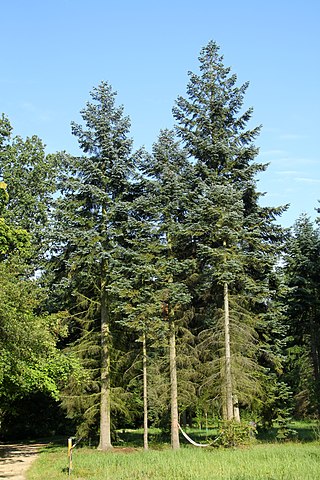
Abies procera, the noble fir, also called red fir and Christmas tree, is a species of fir native to the Cascade Range and Pacific Coast Ranges of the northwestern Pacific Coast of the United States. It occurs at altitudes of 300–1,500 meters (980–4,920 ft).

Melica is a genus of perennial grasses known generally as melic or melic grass. They are found in most temperate regions of the world.

Glyceria is a widespread genus of grass family common across Eurasia, Australia, North Africa, and the Americas.

Festuca subulata is a species of grass known by the common names bearded fescue and nodding fescue. It is native to the northwestern quarter of North America, from Alaska to South Dakota to northern California, where it is most often found in moist mountain forests.

Melica aristata is a species of grass known by the common names awned melic and bearded melicgrass.
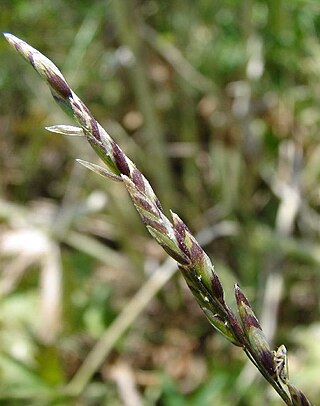
Melica bulbosa is a species of grass known by the common name oniongrass. The common name comes from the onionlike appearance of the corm at its root; it is not related to the onions. It is native to western North America from British Columbia to the Rocky Mountains to California. It may or may not occur as far east as Texas.
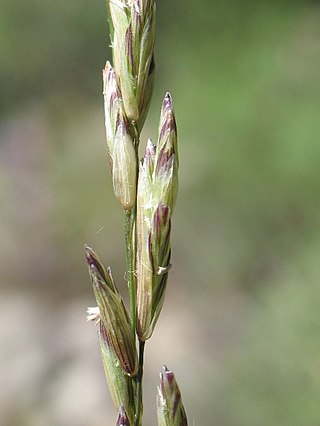
Melica californica is a species of grass known by the common name California melic.
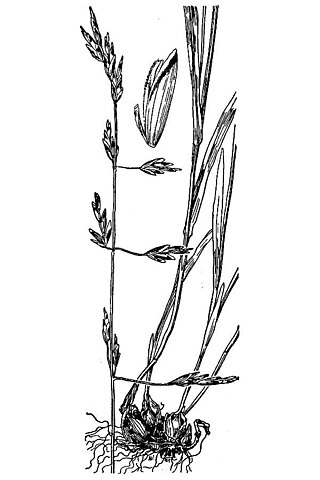
Melica fugax is a species of grass known by the common names little oniongrass and little melic. It is native to western North America where it usually grows in volcanic soils in forest and plateau habitat from British Columbia to the Sierra Nevada and North California Coast Ranges in California.

Melica geyeri is a species of grass known by the common name Geyer's oniongrass.

Melica harfordii is a species of grass known by the common name Harford's oniongrass.
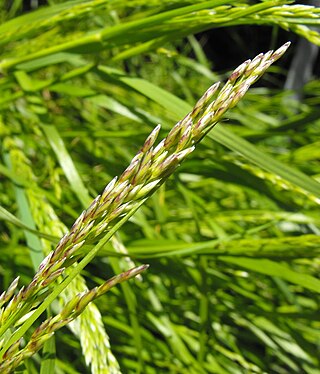
Melica imperfecta is a species of grass known by the common name smallflower melic and little California melic.

Melica spectabilis is a species of grass known by the common names purple oniongrass and showy oniongrass.

Melica torreyana is a species of grass known by the common name Torrey's melicgrass.

Muhlenbergia richardsonis, known by the common name mat muhly, is a species of grass. It is native to North America, where it can be found throughout much of Canada, Alaska, the western half of the contiguous United States through California, and in Baja California, Mexico.

Trisetum canescens is a species of grass known by the common names tall trisetum and tall false oat.

Trisetum wolfii is a species of grass known by the common names Wolf's trisetum and Wolf's false oat. It is native to western North America, including southwestern Canada and the western United States. It occurs in mountain habitat at moderate to high elevations below the tree line, such as spruce, fir, and aspen stands. It is a perennial grass forming clumps of erect stems growing up to about 80 centimeters in maximum height, occasionally reaching one meter. The narrow leaves are mostly located on the lower third of the clumped stems. The inflorescence is a narrow, erect panicle with spikelets green, brownish, or purple in color.
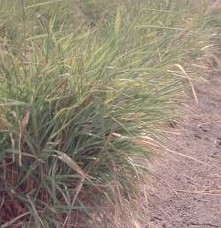
Melica nitens is a species of grass known by the common names threeflower melicgrass or three-flowered melic. It is native to the central United States.

















